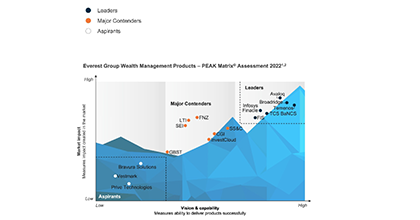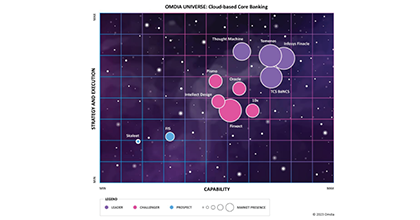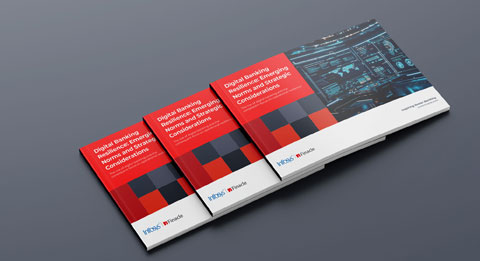There has been a lot of buzz around Artificial Intelligence (AI) and Machine Learning (ML) in recent years, specifically in the areas of fraud management and customer service. The ability to assess customer behavior across social media platforms, ecommerce platforms and even browsing histories has made these improvements possible. Google with its search engine, Amazon with its product recommendations or Facebook with customer specific news feed pioneered the usage of AI & ML.
Have you ever wondered how, if you search for a product on a website, the same product keeps on featuring as an advertisement on all the other websites if you use Chrome as your browser? How Netflix or Amazon prime can recommend the movies or sitcoms to watch based on history, usage and other preferences? Have you ever wondered how your Gmail inbox is automatically able to filter spams and tag mails as social or promotions? Gmail uses a complex algorithm coupled with ML using the subject lines, links (if any) in the mail and historical handling of such mails along with user’s contact lists to filter and tag. With artificial intelligence and voice assistants such as Alexa, the same can be applied to speech recognition.
The other day I was trying to book a hotel for family vacation through one of the online travel portal apps. For the exact same room and other specifications, it showed me different prices since it used two different user IDs, and hence different past preferences, bookings and spending history. And this was at the exact same time.
While most of the above use historical data with complex algorithm and use what we call rule-based or supervised ML; for certain predictions like shopping recommendations they also use association learning or even clustering as part of unsupervised ML. Thus Gmail can apply filtering label, Facebook can customize feed, or any card management company can apply labels to any particular transaction such as “fraudulent” or “good”, based on the transaction data and history available. However, when we apply this rule-based supervised machine learning to complex scenarios where the data may not be clean or where the data is huge and sourced from multiple places online or offline, with no specific labels available, un-supervised ML using auto encoder neural networks which can self-learn, needs to be applied. This is specifically beneficial in reducing false alarm rates which plague the card transaction industry where transactions originate from multiple sources like e-wallets, e-commerce platforms, m-commerce etc. As per a study, around 35% of digital card transactions through large retailers flagged as fraud were found to be false positives resulting in loss of customer trust and business. It cost USD 8.6 Billion of declined order cost to the merchants in 2016. Such false positives can be greatly reduced using the cognitive approach to ML which does not require labeling of datasets, can consider new data on the fly and learn and predict with higher accuracy.
AI and ML can also be effectively applied to traditional payments, be it domestic or cross border through local payment schemes or global schemes like Swift.
Consider the scenario from a fraud detection perspective where a person planning for a foreign destination vacation transfers money in foreign currency to two different vendors where each foreign currency transaction amount is just below the local regulation threshold. Similarly, another person does the same keeping the transaction value below the threshold to deflect and discourage any suspicion and scrutiny that might reveal that the payment is being made for money laundering purposes. A rule-based machine learning system based on historical transaction data may not be able to pick such differences and may tag both transactions as fraud/AML in which case the first payment transaction would be a false positive. However, an unsupervised ML based AML system along with AI which can continuously learn, could provide real-time prediction with higher accuracy and may be able to differentiate between the two transactions.
As part of a Finextra survey with a partner, respondents highlight inefficiencies in handling repairs and 48% highlight inefficiencies in handling investigations. A whopping 62% of respondents highlighted that they have not applied any AI till date to exceptions and repairs.
A combination of cognitive and rule-based supervised machine learning can be applied to any inbound or outbound payment not just for fraud or AML management but also for cases of repair or data enrichment while processing any payment. Most likely causes of a payment failing validations and going into repair queue are incorrect or missing information in the message like BIC address, special characters, incorrectly formatted remittance information, incorrect identification details of customers like account etc. These digitally enabled checks are particularly important to maintain high STP rates. It’s critical as the industry is moving towards immediate and real time payments and settlement of funds, and not only are the costs of manual intervention and repair significant for banks but they also cause significant delays specifically in a cross border scenario. Another research attributes 80% of the processing cost of transactions to exceptions and repairs. It suggests that with an average rate of exceptions at 20%, a single point decrease in exception rate can decrease the cost by 4%.
One important underlying factor in using AI and ML is that data is key and especially the richness of it from a payment processing perspective. The data format of a payment instruction should have sufficient information for any of the AI and ML models to assess and derive value for banks and Fintechs. Adoption of ISO2022 as the global standard for payment messages would facilitate this since extensive information related to remittance can be embedded in the rich data fields it supports.
While the jury is still out on the significance and the scale of usage of AI and ML, and on the most effective way to harness these technologies in banking and financial services, the possibilities and probable benefits that these technologies offer are immense.
References:




















